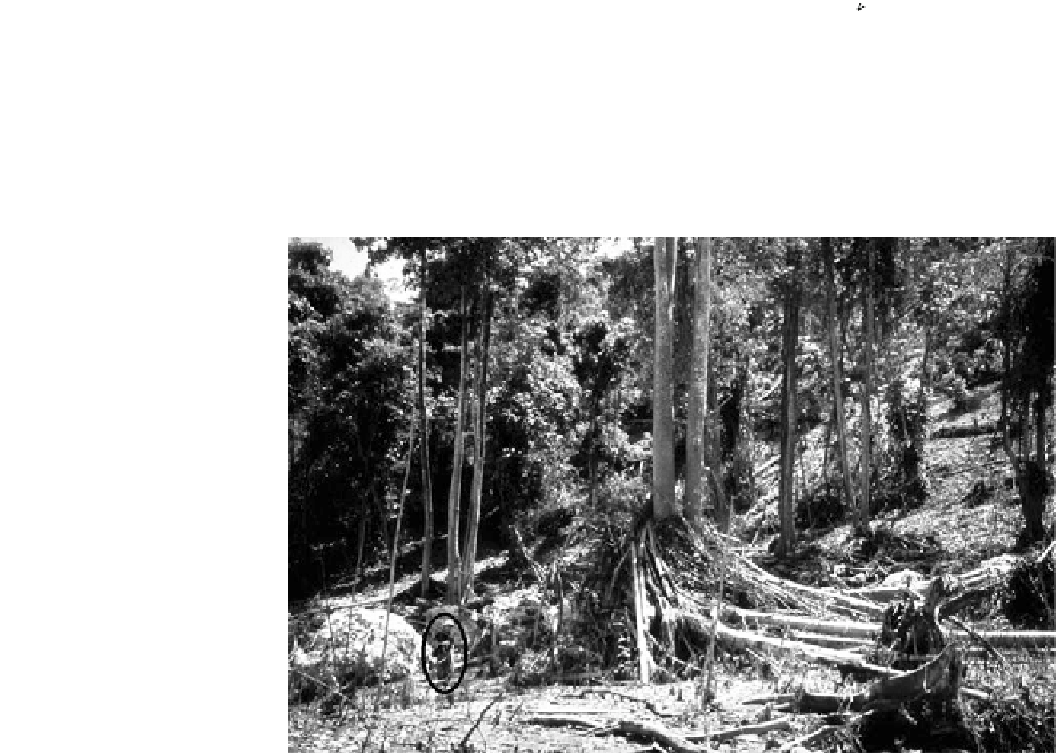Geoscience Reference
In-Depth Information
Fig. 10.4
People fleeing the
third and highest tsunami wave
that flooded the seaside
commercial area of Hilo, Hawaii,
following the Alaskan earthquake
of April 1, 1946. Photograph
courtesy of the U.S. Geological
Survey. Source Catalogue of
Disasters #B46D01-352
Turbulent
jetting
through
trees
Wave bore
Fig. 10.5
Coral boulders
deposited in the forest at
Riang-Kroko, Flores, Indonesia
following the tsunami of
December 12, 1992. Note the
person circled for scale and the
abrupt termination of debris
upslope. Photo Credit Harry Yeh,
University of Washington.
Source NOAA National
Geophysical Data Center
and when they get into harbors, especially ones where the
width of the entrance is small compared to the length of the
harbor's foreshores, they become trapped and cannot escape
back out to sea easily. Inside a harbor or bay, long waves
such as tsunami tend to travel back and forth for hours
dissipating their energy, not across the deeper portions but
against the infrastructure built on the shoreline. Rapid
changes in sea level and dangerous currents can be gener-
ated. Ria coastlines, such as those along the coast of Japan
or southeastern Australia are ideal environments in which
these effects can develop. Boats in harbors are particularly
vulnerable and should put out to sea and deeper water fol-
lowing any tsunami warning.
Fifth, treat rivers exactly like long harbors. When a
tsunami gets into a tidal river or estuary where water depths
can still be tens of meters deep, the wave can travel easily
up the river to the tidal limits or beyond. Along some coasts,
tide limits may be tens of kilometers upriver, and residents
living along the riverbanks may be very unaware that a
threat from tsunami exists. If the river is deep and allows
the penetration of the wave upstream, the height of a long
wave can rapidly amplify where depth shoals or the river
narrows. At these locations, water can spill over levees and
banks, flooding any low-lying topography. In its publication
Tsunami! The Great Waves, the National Oceanic and
Atmospheric Administration (
2012
) likewise warns, ''Stay
away from rivers and streams that lead to the ocean as you
would stay away from the beach and ocean if there is a
tsunami.''
Sixth, tsunami have an affinity for headlands that stick out
into the ocean, mainly because wave energy is concentrated
here by wave refraction. Storm waves can increase in
amplitude on headlands two- or threefold relative to an
adjacent embayed beach. Tsunami are no different.





